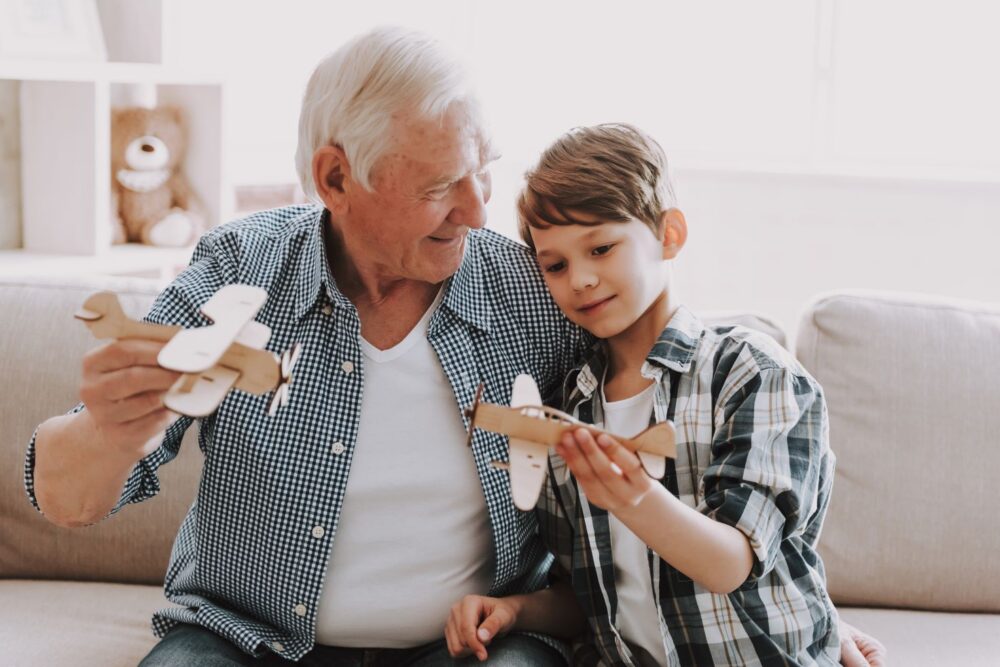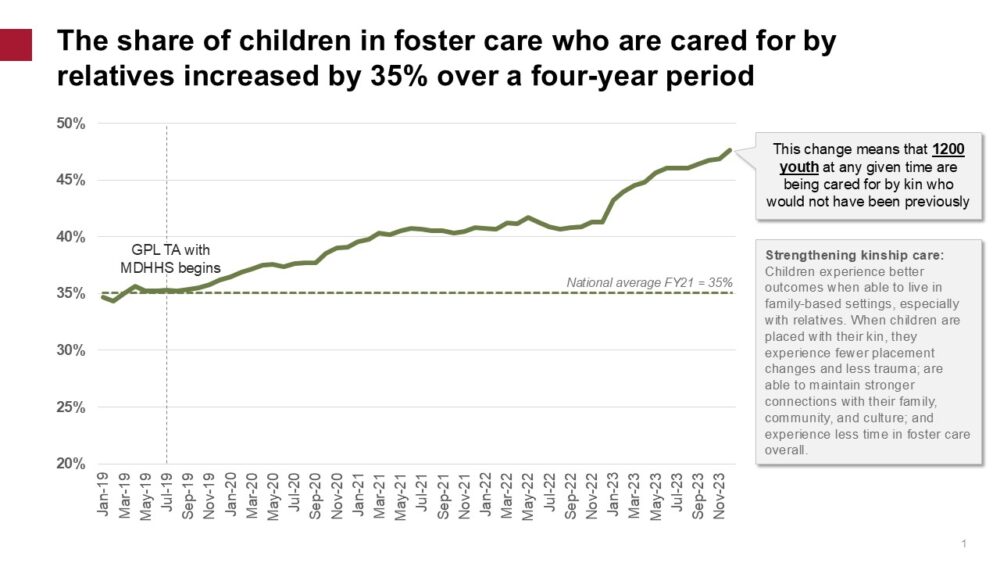
Supporting Kin-First Care
Strengthening Kinship Placements and Supports in Michigan

Impact Highlight: Following GPL support, the share of Michigan children in out-of-home care placed with relatives increased by 35% over four years.
Project Context:
- When children who have been removed from their parents are cared for by kin, they can experience maintained sibling ties, preservation of cultural identity, and greater overall stability.
- Leaders in the Michigan Department of Health and Human Services (MDHHS) identified that when children were placed with kin after a removal, they were more likely to remain there, without a placement change during their first six months, when compared with children placed with foster families.
- MDHHS wanted to strengthen targeted supports for kin caregivers.
How the GPL Supported:
- Helped MDHHS staff develop and pilot several new, kin-focused processes and tools to help caseworkers place more children with kin early on and maintain momentum around continued kin search when initial placement could not be with kin. This included:
- Increasing completion rates for genograms (or family “maps”) to identify potential relatives to care for a child.
- Co-designing a new kin engagement guide to help staff navigate tough conversations with families.
- Elevating youth and family voice in placement decisions by holding more family-involved meetings prior to removal.
- Launching new orientations and outreach support calls to proactively address unique needs of kin caregivers early in new placement.
- Launching case review process for all placements not made with kin to maintain urgency around continued kin search.
Results:
- Statewide the share of children in out-of-home care placed with relatives increased by 35% over four years.
- In two counties that implemented these strategies alongside other kin-first efforts, children placed with kin experienced 30% fewer placement changes within the first three months of placement during the pilot period.
- These efforts to increasingly place children with kin and strengthen supports for those kin caregivers have also contributed to reducing the number of children in congregate care in Michigan.

Related Michigan Projects


Increasing Mental Health Services for Child Welfare-Involved Children in Michigan
